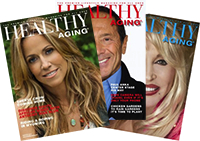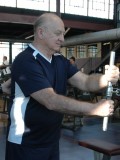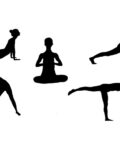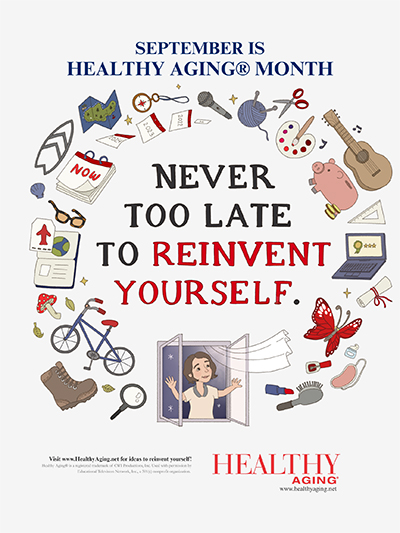
Photo: Deposit Photos
Recently, Healthy Aging® polled its readers asking what content they most wanted to see. Health and Wellness topped the list, with nearly 90% selecting it as their primary area of interest—especially topics like fitness routines, nutrition tips, and strategies for mental well-being. Active travel and next passage ideas were right up there as well.
To answer the request for health and wellness ideas, and just in time for the active spring and summer season, we’re sharing 10 expert-backed fitness tips to help you stay strong, energized, and feeling your best after 45.
Whether you’re just beginning your fitness journey or looking to refine your current routine, these tips from leading health organizations and research centers will help you exercise smarter—and safely.

1. Start with a Check-Up
Before diving into a new fitness plan, get a medical clearance—especially if you’re managing conditions like hypertension, arthritis, or heart issues.
The Mayo Clinic recommends discussing exercise with your physician, particularly if you experience chest pain, dizziness, or joint issues during movement.
2. Improve Balance and Flexibility
Staying agile can reduce your risk of falls and improve posture and mobility.
The National Institute on Aging (NIA) suggests incorporating activities like yoga, tai chi, or simple balance moves (such as heel-to-toe walking or standing on one leg) to maintain coordination and flexibility.

Photo: Deposit Photos
3. Build Strength to Combat Muscle Loss
After 40, we naturally lose muscle unless we work to preserve it.
Tufts University’s Human Nutrition Research Center on Aging (HNRCA) shows that strength training 2–3 times a week can prevent sarcopenia, improve bone health, and enhance metabolic function.
4. Get 150 Minutes of Moderate Cardio Weekly
Heart health, stamina, and mental clarity all benefit from aerobic exercise.
According to the CDC and American College of Sports Medicine (ACSM), aim for 150 minutes of moderate cardio per week—such as walking, swimming, or cycling.

Photo: Deposit Photos
5. Warm Up and Cool Down
Avoid injury by gradually preparing your body and allowing it to recover post-workout.
Harvard Health Publishing recommends warming up with light movement and dynamic stretches, and cooling down with slow walking and static stretching to prevent stiffness.
6. Be Consistent, Not Perfect
Every movement counts—even if it’s not a structured workout.
SilverSneakers® emphasizes regular activity over intensity. Walking the dog, gardening, or dancing in the kitchen can all boost your physical and emotional health.
7. Focus on Functional Movements
Train for everyday life—bending, lifting, reaching, and balancing.
The American Council on Exercise (ACE) advises integrating exercises like squats, lunges, and planks that mimic real-life movements and help preserve independence.
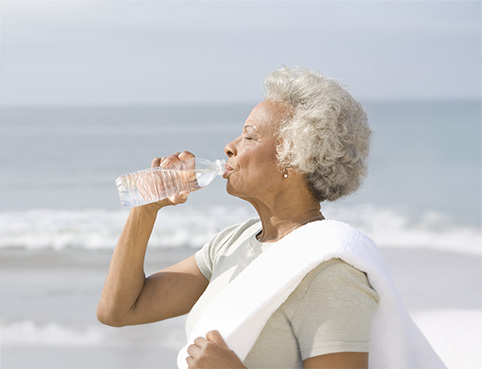
8. Hydrate and Eat for Strength
Proper fuel is essential, especially as your metabolism changes.
Mayo Clinic stresses hydration, while Tufts researchers highlight the importance of lean protein, calcium, and vitamin D for maintaining muscle and bone health.
9. Use Technology to Stay Motivated
Track progress and stay engaged with digital tools.
The Cooper Institute found that wearable fitness trackers can improve accountability by helping users set goals and monitor progress—especially helpful for staying active during busy weeks.
10. Listen to Your Body and Rest When Needed
Rest and recovery are just as important as movement.
Johns Hopkins Medicine reminds us to pay attention to pain, fatigue, or discomfort. Modifying your workout or adding recovery days can prevent injury and help you stay consistent long-term.

Final Thoughts: Movement Is Medicine
There’s no single way to stay fit after 45, but staying active on a consistent basis—whether through formal workouts or everyday movement—is one of the best gifts you can give yourself.
Start slow, build momentum, and choose activities that bring you joy. Fitness isn’t just about adding years to your life—it’s about adding life to your years.

